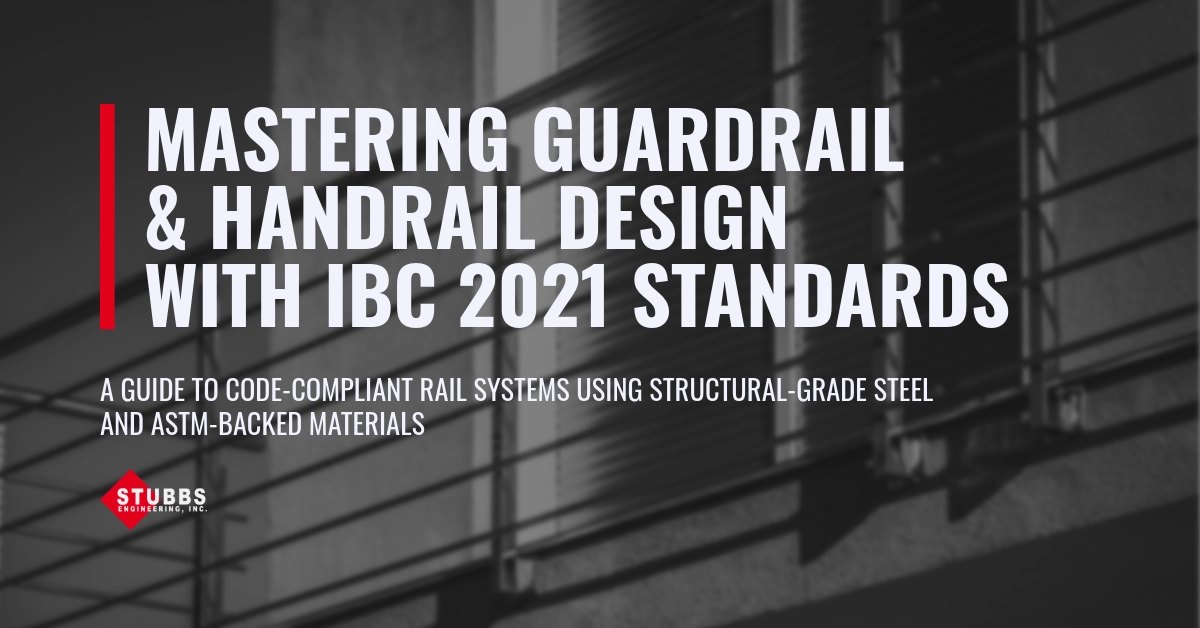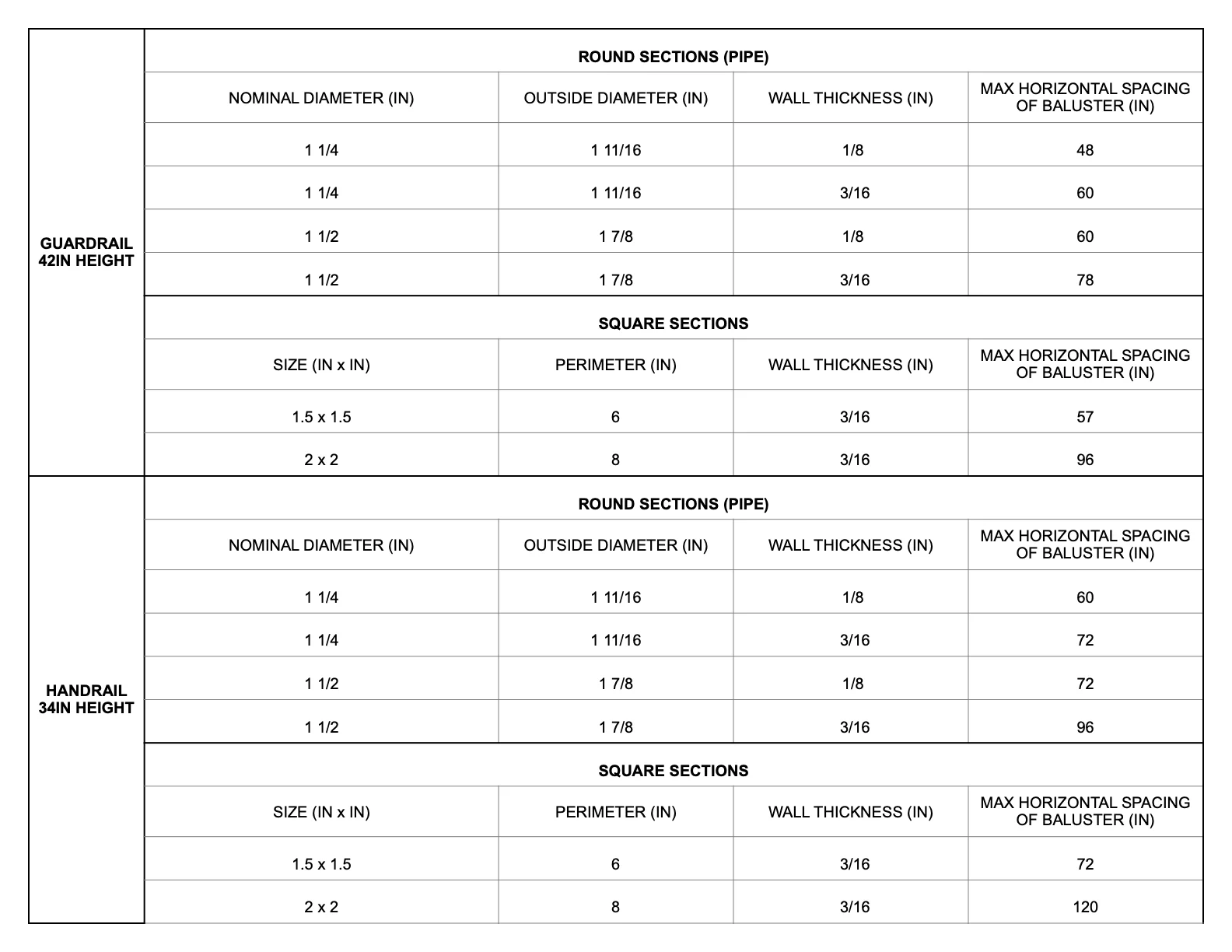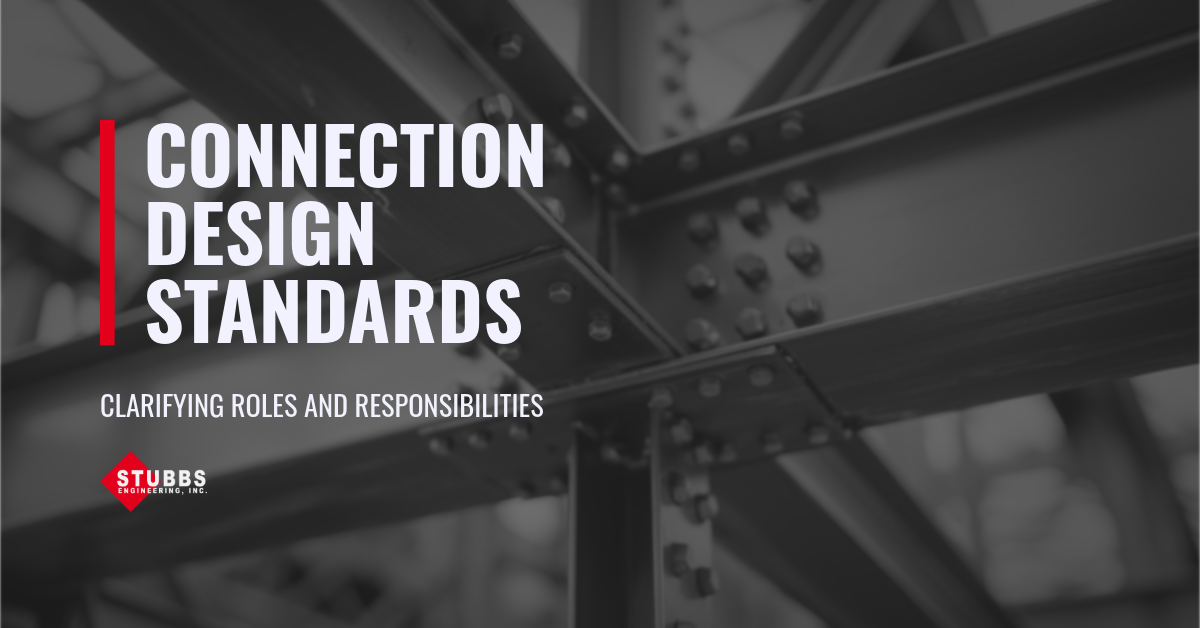
Understanding IBC 2021 Load Requirements
When it comes to the specifications of handrails and guardrails, IBC 2021 Section 1015 is your ultimate guide. This section clearly outlines the critical dimensions and clearances needed to ensure safety and compliance in any building environment. Section 1607.8 specifies the load requirements for handrails and guardrails to withstand a 50 lb/ft linear load along the top of the rail system or a 200 lb. point load at any location within the railing assembly. Adhering to these standards is not just a checkbox—it’s vital for maintaining the structural integrity and safety of your railing systems.
Material Selection & Structural Adequacy
To simplify your design process, we’ve included a comprehensive table showcasing the structural adequacy of various rail systems. These tables are more than just numbers—they’re a roadmap for selecting high-performing materials. For instance, round sections feature steel pipe top rail made from ASTM A53 Gr. B with posts using dual grade ASTM A500 Gr. B, while square sections comply with ASTM A500 Gr. B standards. These top-tier materials promise durability, strength, and longevity—making them ideal for both residential and commercial projects.

Attachment Methods & Engineering Collaboration
The attachment method of guardrails and handrails is a critical design component—it significantly impacts both performance and safety. Given the wide variety of structural systems in buildings, consulting a structural engineer isn’t just recommended—it’s essential. They provide insights into load distribution, material compatibility, and installation methods that meet code. This collaboration ensures railing systems are not only compliant, but also contribute to the structure’s overall safety and visual appeal.
Have questions about your railing system?
Our engineering team is here to help. Whether you’re navigating IBC 2021 requirements or refining material choices, we’ll make sure your design is safe, code-compliant, and structurally sound. Contact us to start the conversation.
other articles

We’re celebrating 15 years of engineering excellence, collaboration, and growth. This milestone wouldn’t be possible without our incredible clients and dedicated team who’ve shaped our journey from day one. Read more as we reflect on our achievements and look toward the next chapter.

This article breaks down how the AISC Code of Standard Practice (CoSP) clarifies the roles of the Engineer of Record, Steel Detailer, and Connection Engineer in connection design. It outlines the three primary design options, explains key provisions that ensure clarity and accountability, and highlights how consistent communication leads to safer, more efficient projects.

Learn how Seismic Design Categories (SDCs) affect every stage of a project, from design to construction and cost. This article explains the key factors that define your SDC and how early planning with your structural engineer can prevent costly redesigns and keep your project on schedule.
